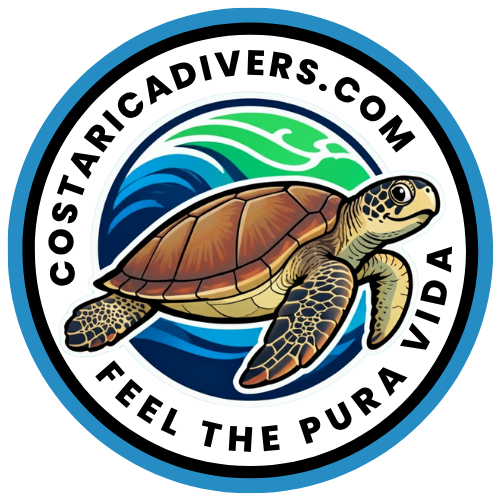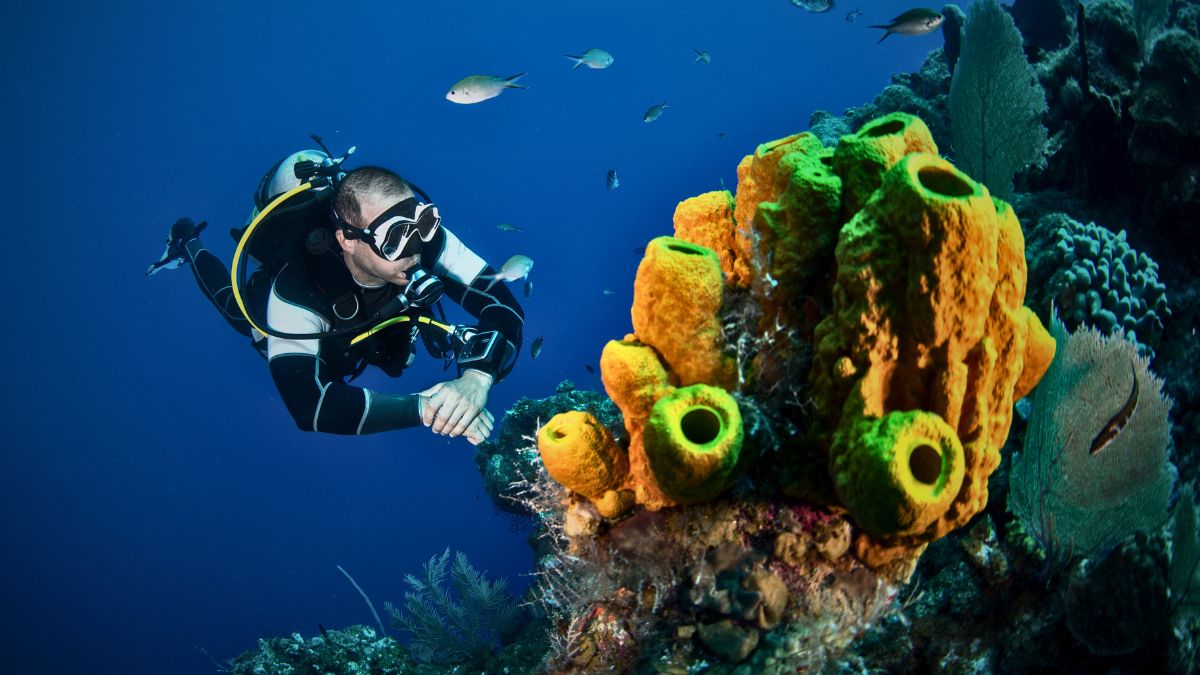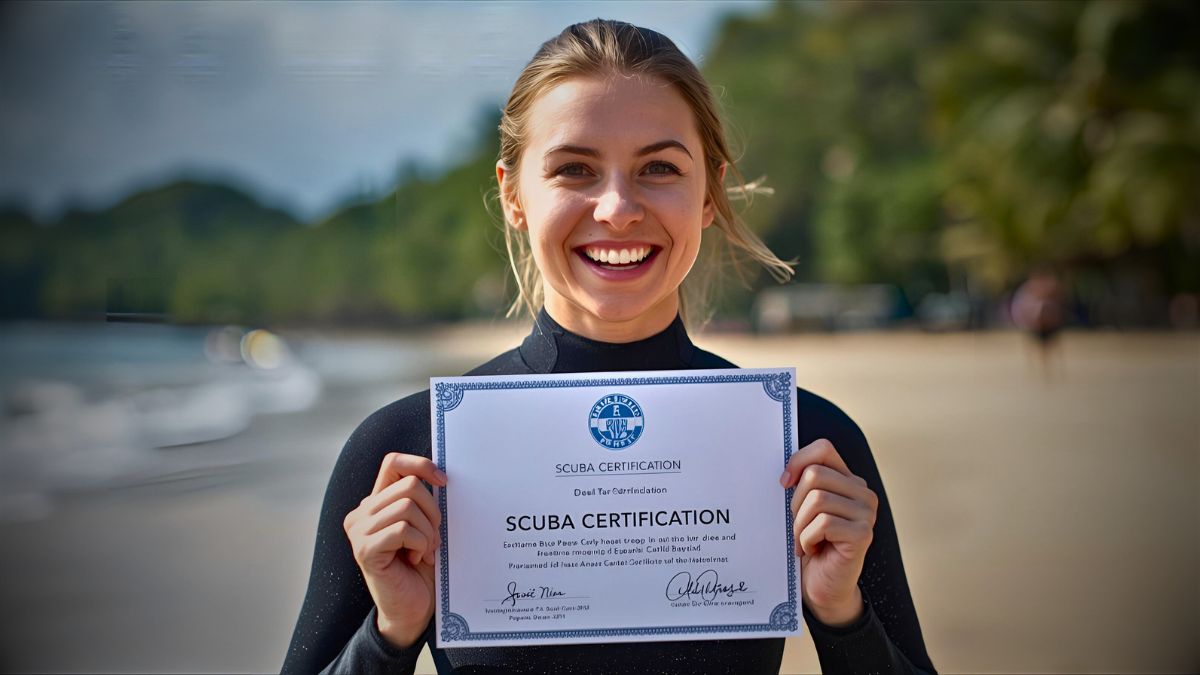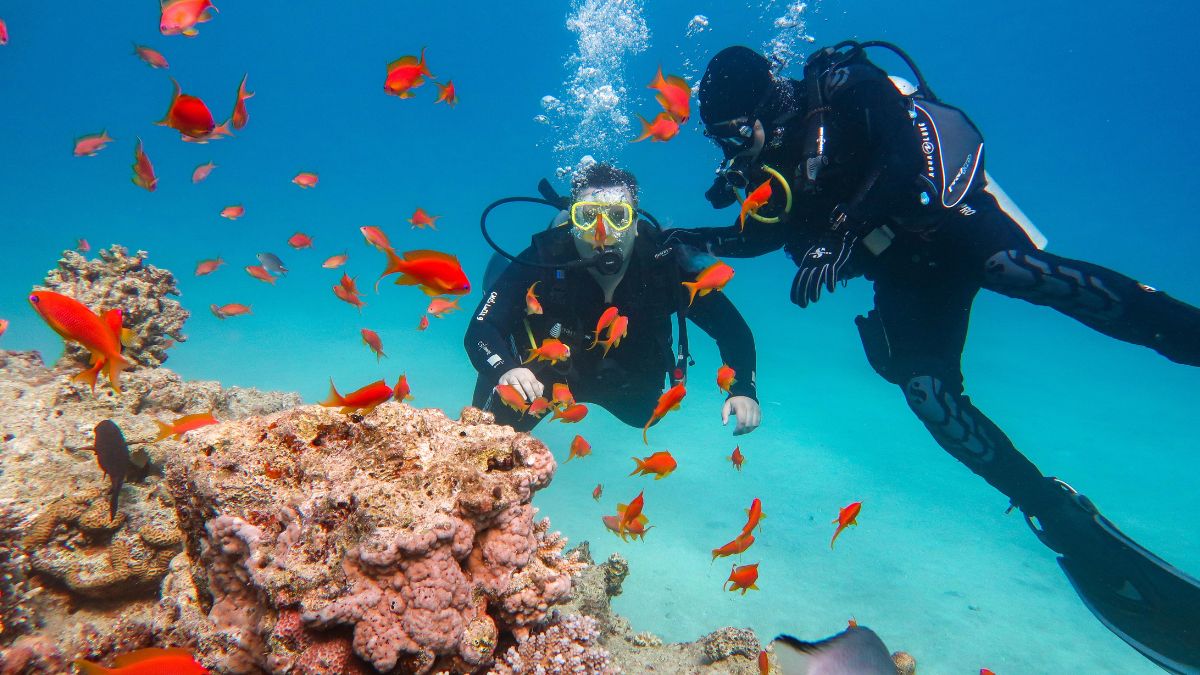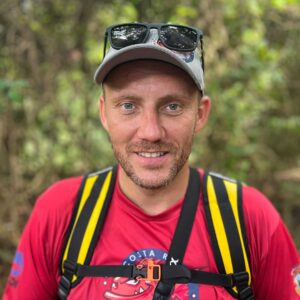Are you dreaming of exploring the underwater world, swimming alongside vibrant marine life, and discovering what lies beneath the waves? Getting certified as a scuba diver in Costa Rica opens the door to incredible adventures in one of the planet’s most biodiverse marine environments.
This guide walks you through everything you need to know about how to become a certified scuba diver in Costa Rica, from choosing the right certification program to diving at some of the most spectacular sites in the world.
Why Costa Rica Is the Perfect Place to Get Certified
Costa Rica isn’t just a tropical paradise above water. It’s equally stunning beneath the surface. With coastlines on both the Pacific Ocean and the Caribbean Sea, this small Central American country offers incredible scuba diving opportunities.
The warm tropical waters stay comfortable year-round, typically ranging from 26-28°C (79-82°F). You’ll find protected marine reserves teeming with life, from tiny seahorses to massive manta rays. The visibility is usually excellent, especially during the dry season. Costa Rica has established itself as a leader in eco-tourism and marine conservation, meaning the reefs and dive sites are well-protected and thriving.
Beginner divers are consistently amazed by how welcoming the diving community is here. Professional PADI dive centers dot the coastlines, staffed by experienced instructors who genuinely care about your safety and enjoyment. You’ll find solid infrastructure, modern equipment, and comfortable dive boats throughout the country.
Did you know? Costa Rica is home to over 6,000 marine species, making it one of the most biologically diverse diving destinations on Earth. In a single dive, you might encounter sea turtles, rays, sharks, dolphins, and hundreds of colorful reef fish.
Understanding Scuba Diving Certifications: What You Need to Know
Before you jump into the water, it helps to understand what scuba certification actually means. The most recognized certification worldwide comes from PADI (Professional Association of Diving Instructors). With over 28 million certifications issued globally, PADI is the gold standard in recreational diving.
When you become a certified scuba diver through PADI’s Open Water program, you earn a credential that allows you to dive independently (with a buddy) up to 18 meters (60 feet) anywhere in the world. This certification never expires. Once you’re certified, you’re certified for life.
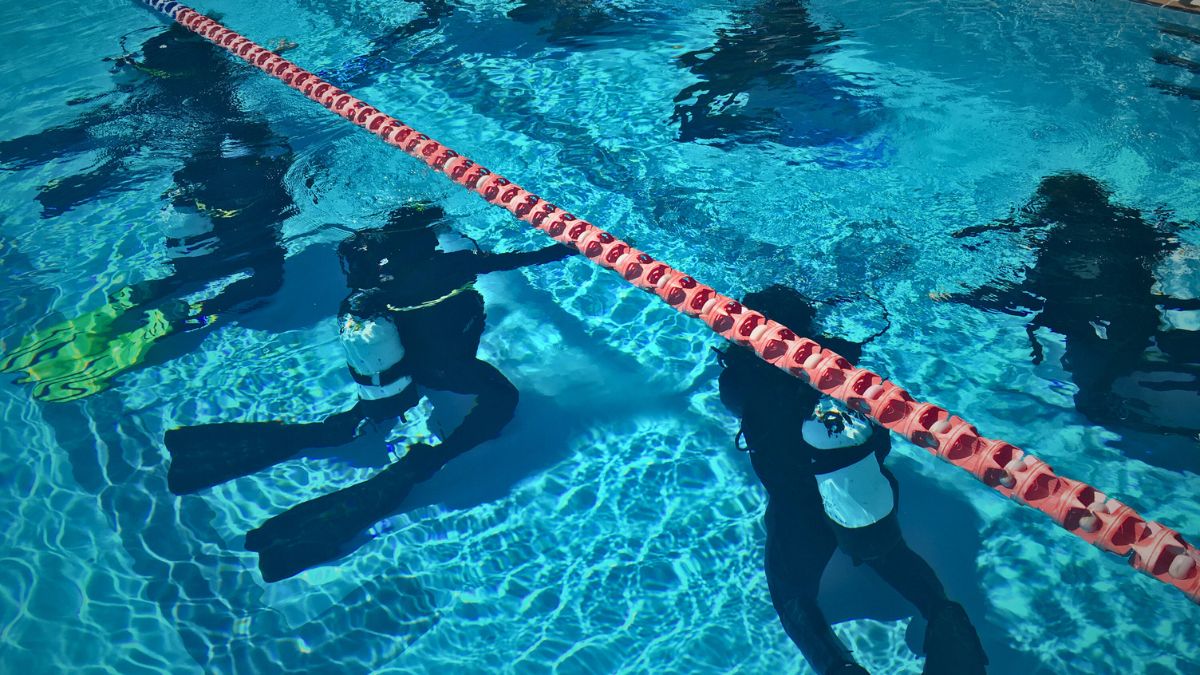
You might also hear about SSI (Scuba Schools International), another reputable certification agency. Both PADI and SSI certifications are widely accepted at dive shops worldwide, so you can’t go wrong with either. For most beginners in Costa Rica, PADI tends to be more common because there are more PADI dive centers throughout the country.
The certification process proves you understand the basics of diving physics, safety procedures, equipment use, and emergency protocols. It’s not just about being able to breathe underwater. It’s about doing it safely and confidently.
The Step-by-Step Process to Become a Certified Scuba Diver in Costa Rica
Here’s what happens during your certification course. The process typically takes 3-4 days, though you can spread it out over a longer period if you prefer.
Step 1: Theoretical Learning
Your scuba diving education begins on dry land. You’ll learn about the science of diving, including how pressure affects your body underwater, how to plan dives safely, and how to use all the equipment properly. This knowledge development phase can be completed through PADI eLearning, which lets you study at your own pace before you even arrive in Costa Rica.
The online coursework typically takes 5-7 hours to complete. You’ll watch videos, read materials, and take quizzes to test your understanding. Topics include dive planning, the aquatic environment, underwater communication, and what to do if something goes wrong. The material is designed for complete beginners and uses simple, clear language.
At the end of the theory section, you’ll take a final knowledge review. You need to score at least 75% to move forward. Most students pass easily because the material is straightforward and practical.
Step 2: Confined Water Training (Pool Sessions)
Next, you’ll put on scuba gear for the first time and practice essential skills in a controlled environment, usually a swimming pool or calm, shallow water. During these confined water dives, you’ll learn how to:
- Clear water from your mask underwater
- Recover your regulator (the mouthpiece) if it comes out
- Achieve neutral buoyancy (floating weightlessly)
- Share air with a buddy in an emergency
- Handle your equipment confidently
Your instructor will be right beside you the entire time, demonstrating each skill and helping you practice until you feel comfortable. These sessions build the muscle memory and confidence you’ll need for real ocean dives. Most courses include 5 confined water sessions spread over a day or two.
This is where most nervous students realize they can actually do this. That first breath underwater stays with you.
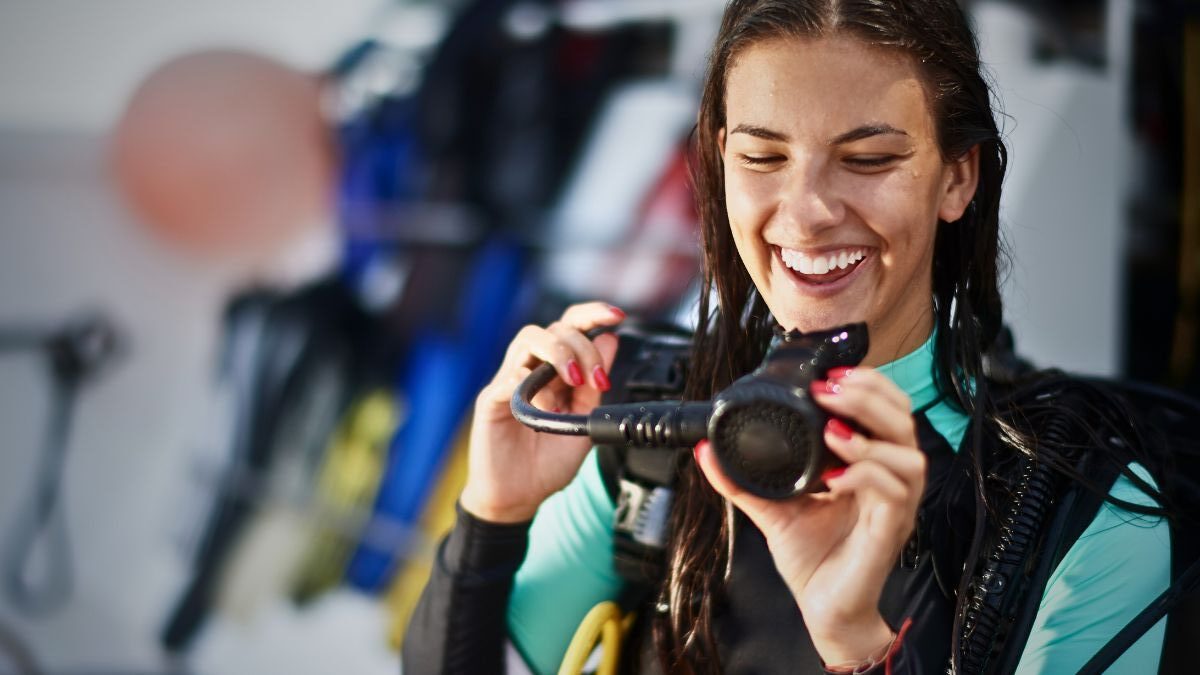
Step 3: Open Water Dives
The final phase takes you into the real ocean. You’ll complete four open water dives over two days, putting into practice everything you’ve learned. In Costa Rica, these training dives often take place at stunning locations like Isla del Cano or Marino Ballena National Park.
During these dives, you’ll demonstrate your skills in a real underwater environment while exploring reefs, spotting marine life, and experiencing the weightless freedom of diving. Your instructor stays close, but you’ll feel increasingly independent with each dive. By the fourth dive, most students are completely comfortable underwater.
Step 4: Receiving Your Certification
After successfully completing all four open water dives and demonstrating competency with the required skills, you’ll receive your PADI Open Water Diver certification card. This card is your passport to diving anywhere in the world.
Fun Fact: The first breath you take underwater is often described as life-changing by divers. Your brain has to overcome the instinct that says “don’t breathe underwater,” making that first successful breath incredibly memorable.
What to Expect: Course Requirements and Prerequisites
You don’t need to be a professional athlete or an expert swimmer to become a certified scuba diver in Costa Rica. However, there are some basic requirements:
Age: You must be at least 10 years old. Children aged 10-14 receive a Junior Open Water certification with slightly more conservative depth limits. At 15, the junior certification automatically upgrades to a regular Open Water certification.
Health: You need to be in reasonably good health. You’ll complete a medical questionnaire before starting the course. If you answer “yes” to any of the questions about pre-existing medical conditions, you’ll need clearance from a doctor before diving. Common concerns include asthma, heart conditions, and ear problems.
Swimming ability: You should be comfortable in the water. PADI requires you to swim 200 meters (or 300 meters with mask, fins, and snorkel) and tread water or float for 10 minutes. You don’t need to be fast, just comfortable and confident in the water.
Language: Course materials are available in multiple languages. English and Spanish are most common in Costa Rica, but many dive centers offer instruction in German, French, and other languages.
There’s no prior diving experience required. This course takes you from complete beginner to certified diver.
Best Locations to Get Certified in Costa Rica
Costa Rica offers several world-class locations for scuba certification, each with its own character and marine life highlights.
Isla del Cano – Osa Peninsula
Isla del Cano consistently ranks as one of the best dive sites in Costa Rica. This small island off the Osa Peninsula is surrounded by protected marine reserve waters. The biodiversity here is extraordinary. During your certification dives, you might encounter reef sharks, giant manta rays, sea turtles, and massive schools of jacks and snappers.
The visibility at Isla del Cano typically ranges from 15-30 meters (50-100 feet), and the waters are calm and clear, making it ideal for beginners. The journey to the island by boat takes about 90 minutes from the mainland, giving you time to spot dolphins and sometimes even whales during migration season (December through April).

Uvita – Marino Ballena National Park
Uvita is home to our PADI 5 Star Dive Center and offers excellent conditions for learning to dive. The name “Marino Ballena” means “Marine Whale,” and the park is famous for humpback whale sightings. The park protects pristine coral reefs, rocky formations, and diverse marine habitats.
Dive sites near Uvita range from shallow, protected areas perfect for training to slightly deeper sites where you’ll see bigger marine life. The town itself is laid-back and welcoming, with plenty of accommodation options and a strong environmental ethos. Learning to dive here means becoming part of a community that deeply values ocean conservation.
Guanacaste – Pacific Coast
The Catalina Islands and other Guanacaste dive sites offer thrilling diving with nutrient-rich waters that attract large marine animals. While Guanacaste is known more for advanced diving, there are plenty of sites suitable for certification courses.
The water in Guanacaste can be slightly cooler and sometimes less clear than other parts of Costa Rica, especially during the dry season when upwelling brings nutrient-rich water from the depths. But this same phenomenon attracts incredible marine life, including manta rays, eagle rays, and various shark species. If you’re hoping to see big animals during your certification, Guanacaste delivers.
Course Costs and What’s Included
The investment to become a certified scuba diver in Costa Rica typically ranges from $600 to $800 USD, depending on the location and dive center. This might seem like a significant expense, but consider what’s included:
- All scuba equipment rental (wetsuit, BCD, regulator, tank, weights, fins, mask)
- PADI eLearning materials and digital manual
- Professional instruction from certified PADI instructors
- Pool or confined water training sessions
- Four open water training dives
- Boat transportation to dive sites
- PADI certification processing and card
- Park entrance fees (if diving in national parks)
- Sometimes lunch or snacks on dive days
When you break it down, you’re getting professional training, high-quality equipment, boat trips, and a globally recognized certification that lasts forever. Most people find it’s excellent value, especially considering that you’re learning in one of the world’s most beautiful diving destinations.
Some dive centers offer package deals if you want to continue your education immediately with Advanced Open Water or specialty courses. This can save you money in the long run.
Did you know? Costa Rica abolished its military in 1949 and redirected those funds toward education, healthcare, and environmental conservation. This decision shaped the country into the global conservation leader it is today, directly benefiting marine protection.
The Benefits of Getting Certified in Costa Rica
Choosing to become a certified scuba diver in Costa Rica offers advantages beyond just the certification itself.
Explore Diverse Marine Life
Costa Rica’s waters host an incredible array of marine species. You’ll dive in ecosystems ranging from coral reefs to rocky pinnacles to sandy bottoms, each supporting different communities of life. It’s not uncommon to see multiple species of rays, several types of sharks, numerous turtle species, and fish in every color imaginable.
The country’s commitment to marine conservation means these populations are healthy and thriving. Many areas are protected marine parks where fishing is prohibited, allowing wildlife to flourish. This gives you the best possible diving experience as a new diver.

Learn Eco-Conscious Diving Practices
Costa Rica takes environmental protection seriously, and this philosophy extends to its dive centers. During your certification course, you’ll learn not just how to dive, but how to dive responsibly. This includes proper buoyancy control to avoid damaging coral, how to observe marine life without disturbing it, and understanding your role in ocean conservation.
Many dive centers in Costa Rica participate in reef cleanup efforts, citizen science projects, and conservation initiatives. You’ll likely leave your course not just as a certified diver, but as an ocean advocate.
Create Unforgettable Memories
Learning to dive is transformative. That first moment of weightlessness, the first time you lock eyes with a sea turtle, the incredible silence of the underwater world – these experiences stay with you forever. Doing it in Costa Rica means you’re surrounded by natural beauty both above and below the water.
Getting a scuba certification in Costa Rica ranks among the best decisions many divers make. The combination of professional instruction, incredible marine life, and supportive community creates an ideal learning environment.
Frequently Asked Questions
How long does it take to become a certified scuba diver in Costa Rica?
The typical PADI Open Water course takes 3-4 days to complete. You can shorten this if you complete the eLearning portion before arriving (which takes about 5-7 hours of study time). Some intensive programs complete everything in 2.5-3 days. If you need more time, most dive centers are flexible and can spread the course over a week or more.
Do I need prior diving experience?
No prior experience is required. The Open Water course is designed for complete beginners. If you want a preview before committing to the full course, consider trying a Discover Scuba Diving experience first. This introductory program lets you try diving in a pool and possibly the ocean under close supervision, with no certification.
What if I have medical concerns?
Certain medical conditions require doctor’s clearance before diving. These include asthma, heart conditions, diabetes, ear problems, and a history of seizures, among others. If you’re unsure, review the PADI medical questionnaire in advance and consult your doctor if needed. Being honest about medical issues isn’t about disqualifying you – it’s about ensuring your safety underwater.
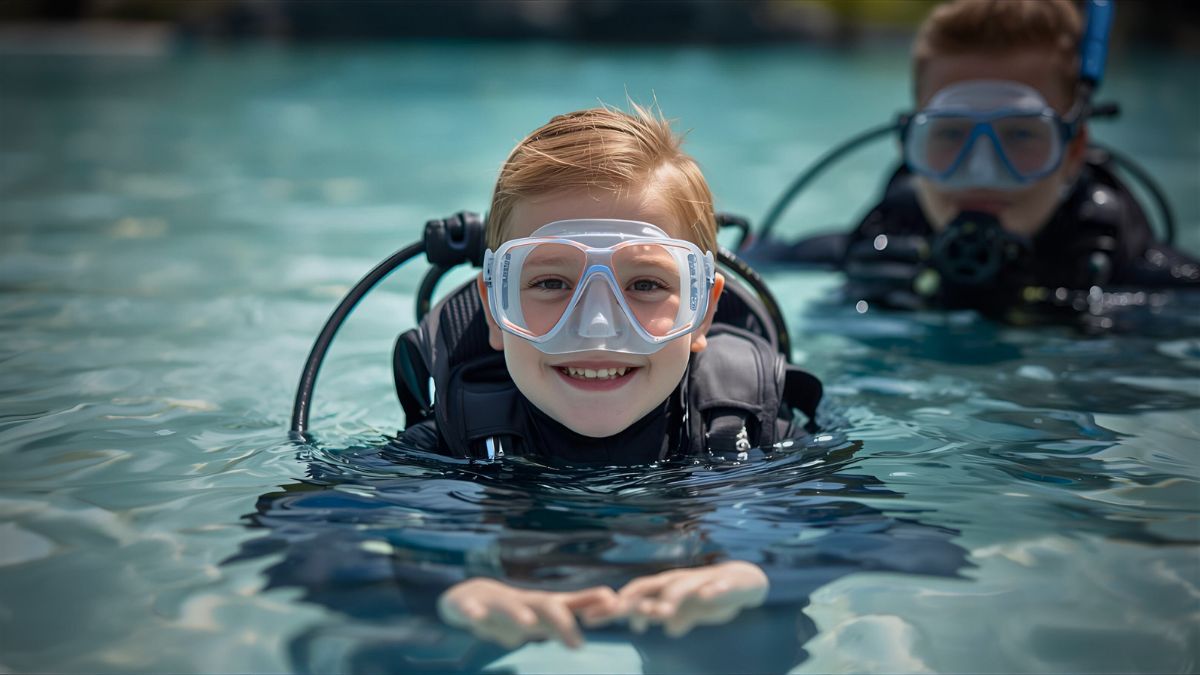
Can I do the course in less time?
Some dive centers offer accelerated programs, but rushing isn’t generally recommended. Learning to dive involves building both skills and confidence, which takes time. That said, completing the theory section via eLearning before you arrive can significantly reduce the total days needed. Quality matters more than speed when learning something as important as scuba diving.
What’s the difference between PADI and SSI certifications?
Both PADI and SSI are globally recognized certification agencies with excellent standards. The main differences are organizational structure and minor curriculum variations. PADI tends to have more dive centers worldwide, making it slightly easier to continue your education anywhere. SSI has a strong digital learning platform. Either certification will serve you well as a diver.
Can children get certified?
Yes. Children as young as 10 can earn a Junior Open Water certification. The course is the same, but with reduced maximum depths for safety (12 meters for ages 10-11, 18 meters for ages 12-14). Junior certifications automatically upgrade to standard Open Water certifications at age 15.
What happens if I can’t complete a skill?
Your instructor will work with you patiently until you feel comfortable. There’s no time limit for mastering skills. If you’re struggling with something specific, instructors can provide extra practice time. The goal is your confidence and safety, not speed. Most students complete all skills successfully with proper instruction and practice.
Start Your Diving Journey in Costa Rica
Ready to take the plunge and become a certified scuba diver in Costa Rica? The hardest part is making the decision. Once you commit, the process flows naturally from theory to pool to ocean.
Start by booking your course at a reputable dive center. If possible, begin your eLearning before you arrive to maximize your dive time. Pack your swimsuit, bring your sense of adventure, and get ready for an experience that will change how you see the ocean forever.
Whether you’re drawn to the pristine waters of Isla del Cano, the whale-rich waters of Uvita, or the dramatic dive sites of Guanacaste, Costa Rica offers the perfect environment for learning to dive. The warm water, incredible marine life, and professional instruction combine to create the ideal certification experience.
In just a few days, you’ll go from curious beginner to certified diver, equipped with skills and knowledge that will serve you for a lifetime. You’ll join a global community of divers who share your passion for exploration and ocean conservation. And you’ll carry memories of swimming through schools of fish, hovering weightlessly over coral reefs, and breathing underwater in one of the world’s most beautiful oceans.
Your underwater adventure starts here.
Sources
- PADI “Open Water Diver Course Standards and Procedures.”
- Costa Rica Tourism Board (ICT). “Marine Protected Areas and Biodiversity.”
- SINAC. “Isla del Cano Biological Reserve.”
